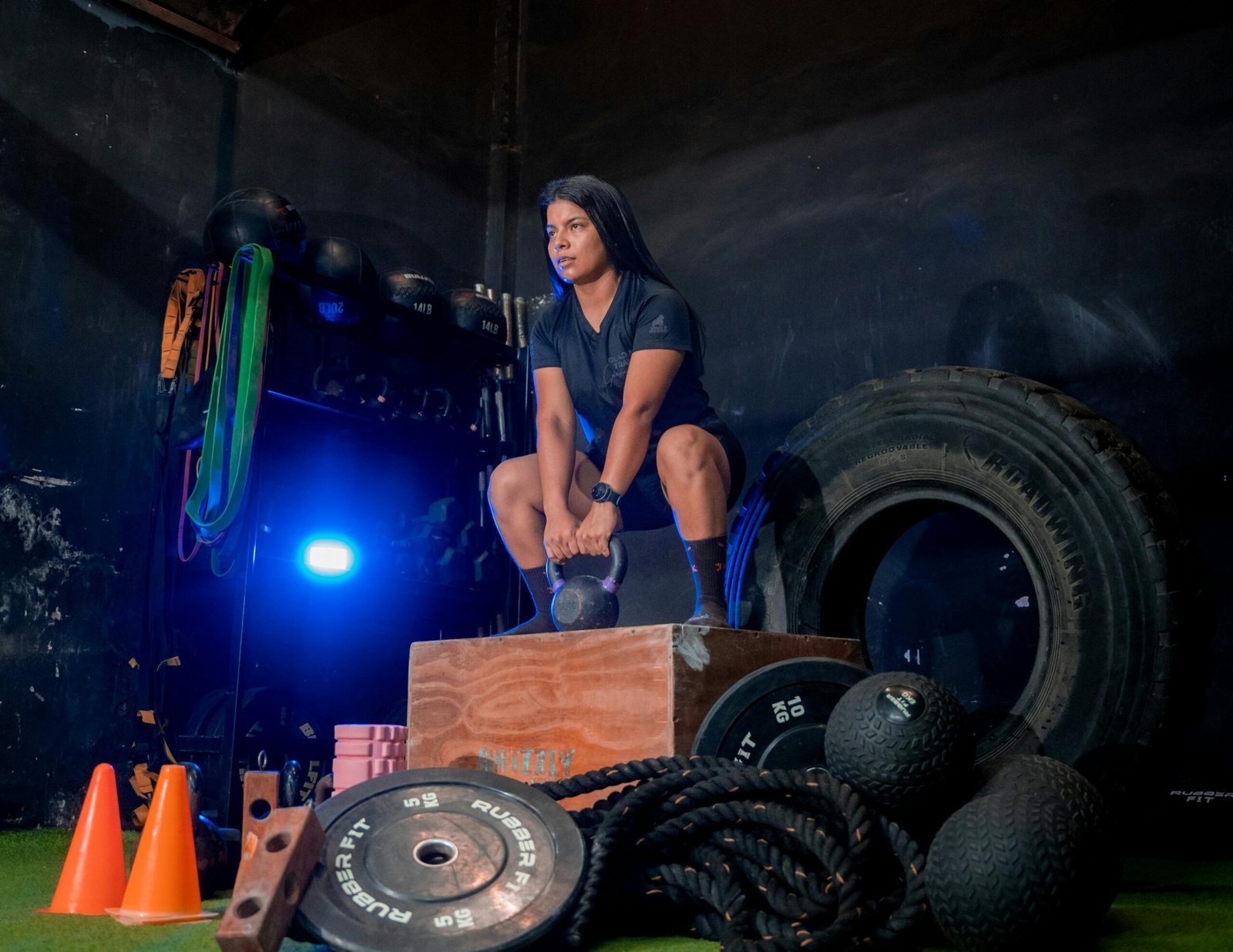In the realm of fitness, all-in-one gym machines have emerged as popular options for individuals seeking comprehensive workout solutions. These machines, which incorporate multiple exercise stations into a single unit, offer a multitude of benefits such as saving space and providing a wide range of exercises. However, when considering purchasing an all-in-one gym machine, it is crucial to carefully examine their costs to ensure optimal value for money. This article aims to compare the costs of various all-in-one gym machines, shedding light on their features and highlighting the summary of each machine’s value proposition.

Introduction
When it comes to setting up a home gym, all-in-one gym machines are a popular choice. These versatile machines offer a variety of exercises and are designed to provide a comprehensive workout experience. However, with so many different types of all-in-one gym machines on the market, it can be overwhelming to decide which one is right for you. In this article, we will explore the various types of all-in-one gym machines, factors that influence their cost, and provide a cost comparison to help you make an informed decision.
1. Types of All-in-One Gym Machines
1.1 Multi-Function Home Gyms
Multi-function home gyms are a popular choice for individuals looking for a comprehensive workout experience. These machines typically feature a variety of stations, including a weight bench, pulley system, and leg press. With the ability to perform a wide range of exercises, multi-function home gyms offer convenience and versatility. However, their cost can vary significantly depending on the brand and quality.
1.2 Cable Machines
Cable machines are another type of all-in-one gym machine that utilizes a cable and pulley system to provide resistance. These machines often feature adjustable weight stacks and a variety of attachments, allowing you to target different muscle groups. Cable machines are known for their smooth and controlled movements, making them a popular choice for strength training. The cost of cable machines can vary based on the number of attachments and the quality of the machine.
1.3 Smith Machines
Smith machines are designed with a fixed vertical barbell and a guided range of motion. These machines are known for their stability and safety features, making them suitable for individuals who prefer to work out alone. Smith machines typically include a weight rack and can be used for a variety of exercises, including squats, bench presses, and shoulder presses. The cost of Smith machines can be influenced by factors such as the weight capacity and additional features.
1.4 Power Towers
Power towers, also known as pull-up and dip stations, are a compact and versatile option for those looking to build upper body strength. These machines typically include a pull-up bar, dip bars, and other attachments for performing exercises such as push-ups, leg raises, and dips. Power towers are relatively affordable compared to other all-in-one gym machines, making them a popular choice for individuals with limited space and budget.
1.5 Bowflex Machines
Bowflex machines are a well-known brand in the fitness industry, offering a range of all-in-one gym machines. These machines utilize a unique resistance system known as power rods, which provide a smooth and controlled workout experience. Bowflex machines are popular for their compact size and ability to target multiple muscle groups. The cost of Bowflex machines can vary depending on the model and included features.
1.6 Total Gyms
Total Gyms are another type of all-in-one gym machine that utilizes bodyweight resistance and an inclined glideboard. These machines offer a wide range of exercises, allowing you to target different muscle groups by adjusting the incline and resistance levels. Total Gyms are known for their versatility and space-saving design. The cost of Total Gyms can vary based on the included accessories and the overall quality of the machine.
1.7 Functional Trainers
Functional trainers are popular among individuals who prefer a more dynamic and functional workout. These machines typically consist of two adjustable pulleys that allow for a wide range of exercises and movement patterns. Functional trainers are known for their versatility and ability to mimic natural movements. The cost of functional trainers can vary depending on factors such as the weight stack capacity and the quality of the machine.
1.8 Bodyweight Stations
Bodyweight stations are a cost-effective option for individuals who prefer to perform bodyweight exercises. These machines typically feature a pull-up bar, dip bars, and other attachments for performing a variety of bodyweight exercises. Bodyweight stations are compact and easy to use, making them a popular choice for individuals with limited space. The cost of bodyweight stations is generally lower compared to other all-in-one gym machines.
1.9 Plate-Loaded Machines
Plate-loaded machines are designed to mimic free weights by requiring the user to load plates onto the machine. These machines typically feature a weight bench and various stations for exercises such as chest press, leg press, and lat pulldown. Plate-loaded machines offer the advantage of incremental weight adjustments and a more traditional weightlifting experience. The cost of plate-loaded machines can vary depending on the weight capacity and the quality of the machine.
1.10 Hybrid Machines
Hybrid machines are a combination of different types of all-in-one gym machines and are designed to provide a comprehensive workout experience. These machines often feature a combination of weight stacks, pulley systems, and other attachments. Hybrid machines offer the advantage of versatility and the ability to perform a wide range of exercises. However, their cost can vary significantly depending on the included features and the overall quality of the machine.

2. Factors Influencing Cost
When considering the cost of all-in-one gym machines, it is essential to understand the factors that can influence their price. By considering these factors, you can make a more informed decision and choose a machine that aligns with your budget and fitness goals.
2.1 Brand and Quality
One of the significant factors that can influence the cost of all-in-one gym machines is the brand and overall quality of the machine. Well-known brands that have a reputation for durability and performance often come with a higher price tag. However, investing in a machine from a reputable brand can provide peace of mind and ensure that you are purchasing a high-quality product.
2.2 Features and Functions
The features and functions of an all-in-one gym machine can also affect its cost. Machines with more advanced features, such as built-in workout programs, adjustable settings, or digital displays, are likely to be priced higher than basic models. Consider your specific fitness needs and goals to determine what features are essential for your workout routine.
2.3 Size and Weight Capacity
The size and weight capacity of an all-in-one gym machine can impact its cost. Larger machines that can accommodate more weight are generally priced higher than smaller, less robust models. It is crucial to consider your available space and the amount of weight you intend to use when selecting a machine.
2.4 Accessories and Attachments
Some all-in-one gym machines come with additional accessories and attachments, such as weight plates, pull-up bars, or leg press attachments. These added features can enhance the versatility of the machine but may also result in a higher price. Consider the accessories and attachments that are important to you and factor in the additional cost when comparing machines.
2.5 Technology and Connectivity
With advancements in fitness technology, some all-in-one gym machines offer built-in connectivity features, such as Bluetooth or Wi-Fi capabilities. These features allow you to track your workouts, sync with fitness apps, or stream workout videos. Machines with these technological advancements tend to have a higher price due to the added functionalities they provide.
2.6 Warranty and Customer Support
The warranty and customer support provided by the manufacturer can also influence the cost of all-in-one gym machines. Machines with longer warranty periods and reliable customer support may cost more upfront but can save you money in the long run if any issues arise. It is essential to consider the level of customer support and warranty coverage when comparing the cost of different machines.
3. Cost Comparison of All-in-One Gym Machines
To provide a comprehensive cost comparison, let’s examine the prices of various types of all-in-one gym machines.
3.1 Multi-Function Home Gyms
The cost of multi-function home gyms can vary significantly depending on the brand, quality, and included features. Entry-level models can range from $500 to $1000, while high-end models can cost upwards of $3000.
3.2 Cable Machines
For cable machines, the cost can range from $500 for basic models to $3000 or more for commercial-grade machines with advanced features and attachments.
3.3 Smith Machines
Smith machines typically range in price from $1000 to $4000, with commercial-grade models costing even more. The cost can be influenced by factors such as weight capacity, additional features, and brand reputation.
3.4 Power Towers
Power towers are relatively affordable compared to other all-in-one gym machines, with prices ranging from $100 to $500, depending on the brand and included features.
3.5 Bowflex Machines
Bowflex machines can range in price from $500 for entry-level models to $3000 for more advanced models with additional features and attachments.
3.6 Total Gyms
Total Gyms typically range from $200 to $1000, depending on the model and included accessories. Higher-end models may offer more resistance levels and additional features.
3.7 Functional Trainers
The cost of functional trainers can range from $1000 to $5000 or more, depending on factors such as weight stack capacity, brand reputation, and included attachments.
3.8 Bodyweight Stations
Bodyweight stations are generally more affordable than other all-in-one gym machines, with prices ranging from $100 to $500, depending on the brand and included features.
3.9 Plate-Loaded Machines
Plate-loaded machines can range in price from $500 for basic models to $3000 or more for commercial-grade machines with a higher weight capacity and added features.
3.10 Hybrid Machines
Hybrid machines can vary significantly in price depending on the included features and overall quality. Prices can range from $1000 to $5000 or more for high-end models.

4. Summary of All-in-One Gym Machine Costs
In summary, the cost of all-in-one gym machines can vary significantly depending on the type of machine, brand, quality, and included features. Multi-function home gyms, cable machines, and Smith machines tend to be on the higher end of the price spectrum, while power towers, bodyweight stations, and Total Gyms are generally more affordable options. Factors such as brand and quality, features and functions, size and weight capacity, accessories and attachments, technology and connectivity, as well as warranty and customer support, can all influence the cost of all-in-one gym machines.
5. Conclusion
When considering the cost of all-in-one gym machines, it is essential to take into account your budget, fitness goals, and specific workout needs. By understanding the different types of all-in-one gym machines, factors that influence their cost, and conducting a cost comparison, you can make a well-informed decision and select a machine that meets your requirements. Investing in a high-quality all-in-one gym machine can provide a convenient and effective workout experience in the comfort of your own home.


One thought on “Comparing Costs of All-in-One Gym Machines”